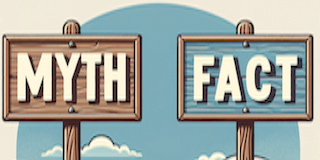Debunking Top Common Agile Myths
In an era where adaptability in business is more crucial than ever, Agile methodologies are pivotal. Moving from traditional, linear models to dynamic, iterative ones, Agile places an emphasis on flexibility, collaboration, and stakeholder feedback. But as with any transformative approach, misconceptions abound. In this comprehensive examination, we debunk the top myths surrounding Agile, paving the way for a clearer understanding of its foundational tenets.
1. Myth: Agile Means No Planning:
Fact: Agile is big on planning – but in increments.
Example: Imagine organizing a large event, like a music festival. Instead of planning every detail from the get-go, with Agile, you’d first secure the venue and the main headliners. Once that’s established, you’d refine further, perhaps adding more artists based on early ticket sales and feedback, then organizing food vendors, and so on. This way, you’re always building and refining the festival based on real-world inputs and ensuring it’s tailored to the audience’s evolving preferences.
2. Myth: Agile is Just for Software:
Fact: While originating in software, Agile’s flexibility and focus on customer feedback have made it applicable across sectors.
Example: Consider a marketing campaign. Using Agile, a team might release a small ad series first, gather audience reactions, and then refine their approach for the next series. This way, they’re always adapting to real-world feedback and maximizing engagement.
3. Myth: Agile Can’t Handle Big Projects:
Fact: Agile scales up. There are methodologies tailored for large-scale operations.
Example: Imagine a multinational company launching a global product. Using the SAFe framework, different teams in various locations would work on distinct features. These teams’ efforts are coordinated and integrated regularly, ensuring that while each team focuses on their part, the entire product comes together cohesively.
4. Myth: Agile Doesn’t Like Documentation:
Fact: Agile values concise and purposeful documentation.
Example: Think of it like a recipe. Traditional methods might provide a long history of the dish, detailed explanations of each ingredient, and multiple cooking variations. In contrast, Agile would give you a straightforward recipe with clear steps – just what you need to cook the dish right now. If the dish becomes popular and needs variations, those can be documented in subsequent iterations.
5. Myth: Agile Only Cares About Speed:
Fact: Agile prioritizes delivering value swiftly but not at the cost of quality.
Example: Consider a car manufacturing unit. Instead of rushing to produce a complete car quickly, an Agile approach might first focus on building a basic, functional model. Once this is achieved, they might introduce enhancements based on early user feedback, like improved interiors or tech upgrades. The aim is always to deliver the best possible version at every stage.
Conclusion:
Agile is a dynamic and customer-centric approach that thrives on feedback and iterative progress. By understanding these myths and the facts behind them, new Agile practitioners can better harness its principles for optimal results. Remember, Agile is not just a methodology; it’s a mindset that champions adaptability and continuous improvement.





0 Comments